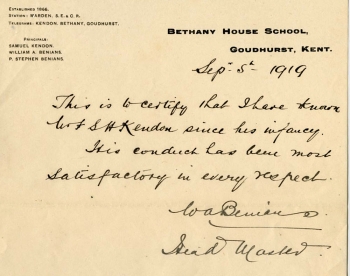Design, analysis and presentation of factorial randomised.
A factorial design is often used by scientists wishing to understand the effect of two or more independent variables upon a single dependent variable. This article is a part of the guide.
The following is an example of a full factorial design with 3 factors that also illustrates replication, randomization, and added center points. Suppose that we wish to improve the yield of a polishing operation. The three inputs (factors) that are considered important to the operation are Speed (X 1 ), Feed (X 2 ), and Depth (X 3).

The engineer designs a 2-level full factorial experiment to assess several factors that could impact the strength, density, and insulating value of the insulation. The engineer analyzes a factorial design to determine how material type, injection pressure, injection temperature, and cooling temperature affect the strength of the insulation.

The 2 2 Design. The simplest of the two level factorial experiments is the design where two factors (say factor and factor ) are investigated at two levels. A single replicate of this design will require four runs () The effects investigated by this design are the two main effects, and and the interaction effect.

Sometimes we depict a factorial design with a numbering notation. In this example, we can say that we have a 2 x 2 (spoken “two-by-two) factorial design. In this notation, the number of numbers tells you how many factors there are and the number values tell you how many levels.

A factorial design is analyzed using the analysis of variance. When only fixed factors are used in the design, the analysis is said to be a. fixed-effects analysis of variance. Suppose a group of individuals have agreed to be in a study involving six treatments. In a. completely randomized factorial design.

Factors B and C are at level 3. With 3 factors that each have 3 levels, the design has 27 runs. In the worksheet, Minitab displays the names of the factors and the names of the levels. Because the manager created a full factorial design, the manager can estimate all of the interactions among the factors.

A 3x3 Factorial design (3 factors each at 3 levels) is shown below.. This might be, for example, a “Drug treatment” with levels Control, Low high doses (columns) and “Diet” with three levels of a food additive represented by the three colours. A 3x3x2 factorial is shown on the right.

Chapter 16 Completely Randomized Factorial ANOVA This tutorial describes the procedures for computing F tests for a completely randomized factorial analysis of variance design. The reading-speed data in Table 16.4-2 of the textbook are used to illustrate the procedures. 1. Enter a description of the.

Design and Analysis of Experiments Factorial Design Fritz Scholz Department of Statistics, University of Washington December 2, 2013 1. Factorial Design We have looked at 1-sample, 2-sample, and t-sample problems. We dealt with a treatment at t levels or with t treatments.

In a factorial design, there are more than one factors under consideration in the experiment.The test subjects are assigned to treatment levels of every factor combinations at random. Example. A fast food franchise is test marketing 3 new menu items in both East and West Coasts of continental United States.

The same argument is applicable to the three levels of time (0 hour, 24 hours, 48 hours) and the four levels of genotype. The design is not mixed effects because no factor is random effects. This is a 3-way fixed effects factorial design.
Analysis essays are known to be one of the most difficult to write. Indeed, a writer should not only present facts but also be able to explain and analyze them. Analysis essays can evaluate both student’s knowledge on selected issues and their ability to express own thoughts and analyze topics. For this reason analysis essays are so much popular, especially in colleges and universities.



